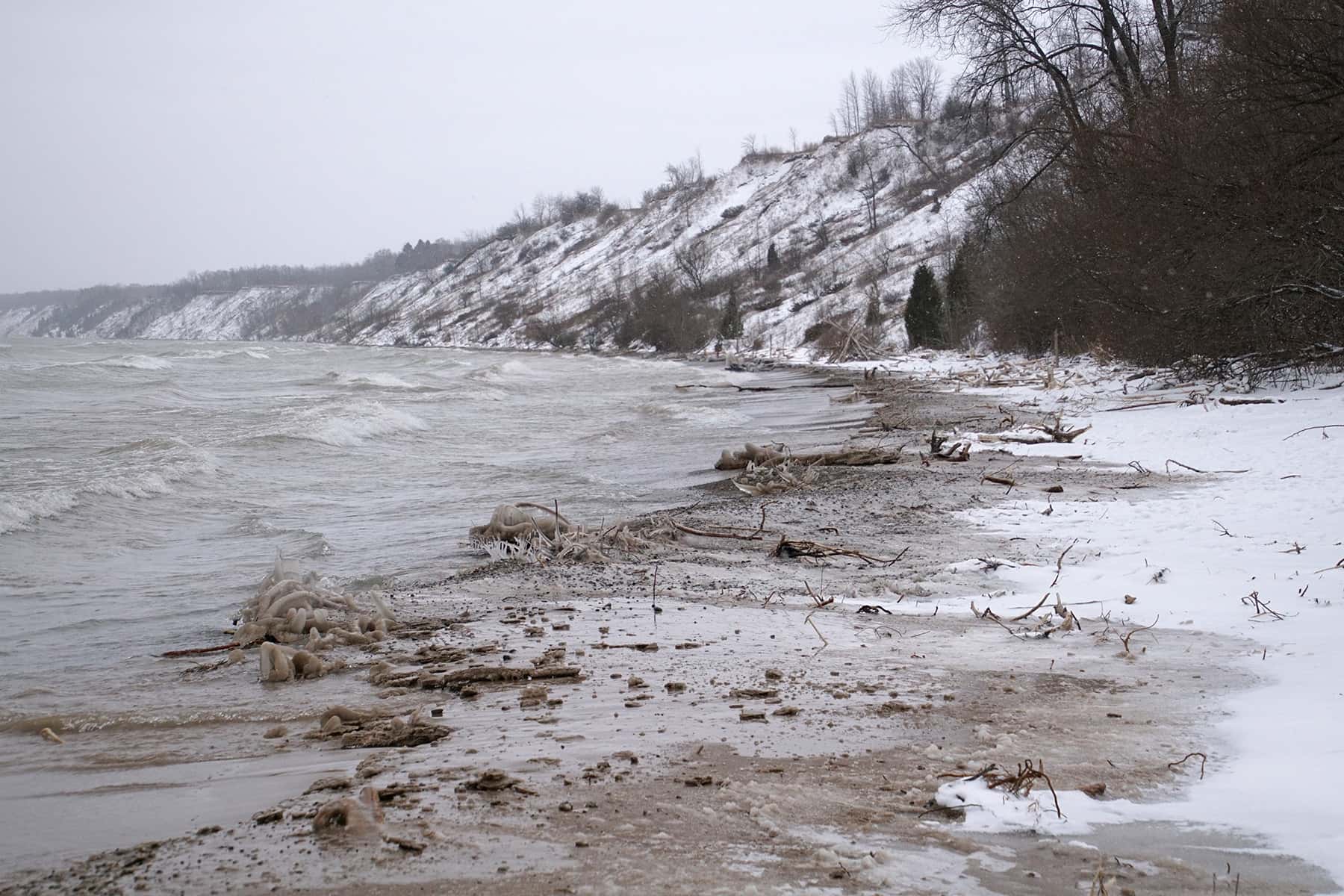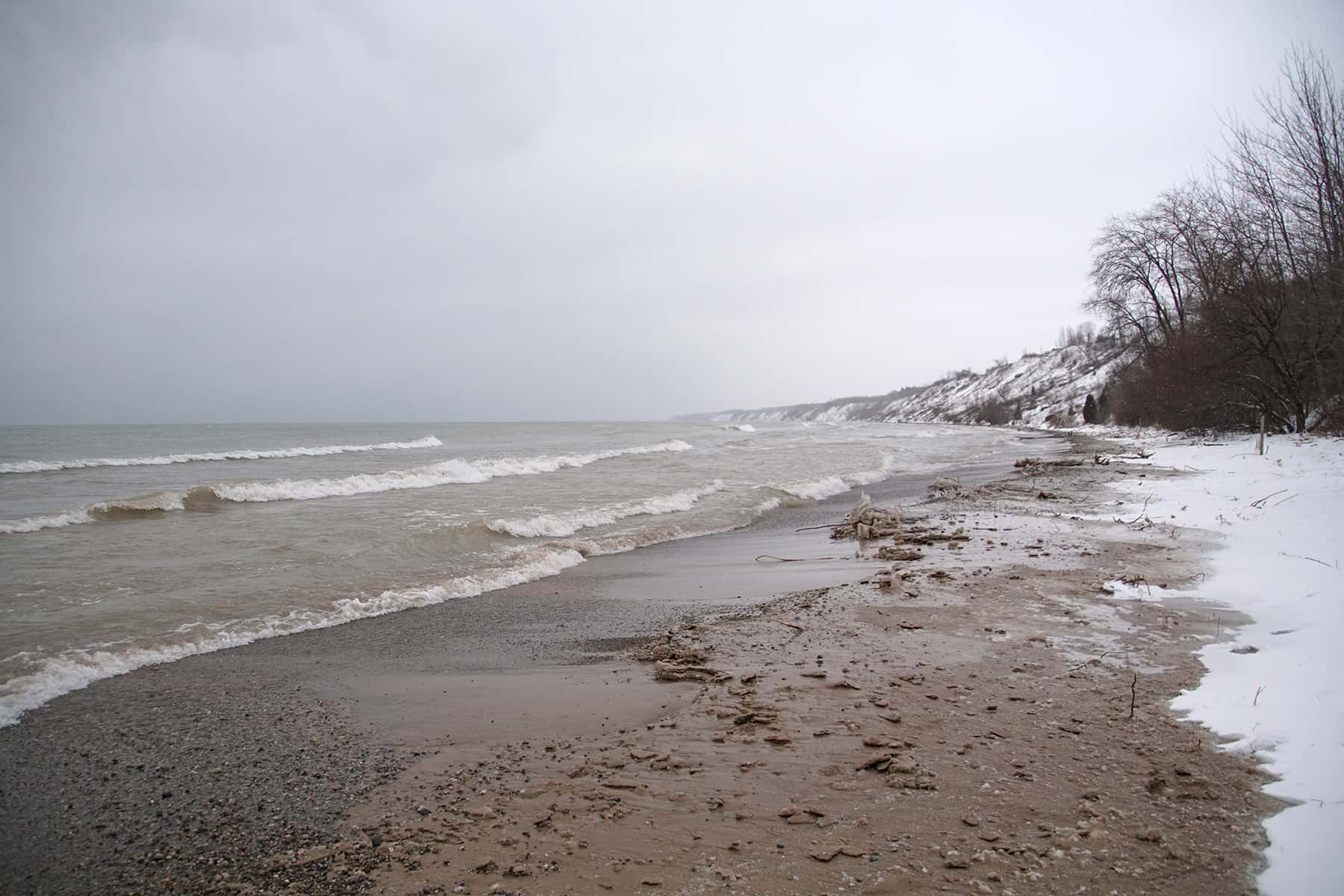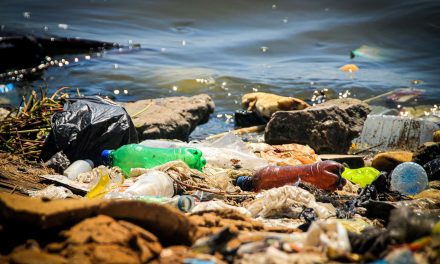
More than 1 million metric tons of salt is flowing into Lake Michigan each year, according to a new study from the University of Wisconsin-Madison. The findings come as the state has been making significant strides to reduce salt use on roads to curb pollution.
Researchers examined past and current water data on the amount of salt flowing into the lake from 234 rivers and streams, according to Hilary Dugan, the study’s lead author and assistant professor for the Center for Limnology at UW-Madison.
“There’s a tremendous amount of salt going into the lake each year,” said Dugan. “But because of the volume of Lake Michigan, that concentration is still pretty low.”
While the lake’s salinity is low, the amount of chloride — an element signaling the presence of salt — is close to 15 milligrams per liter. That level has increased over the last 200 years from about 1 to 2 milligrams per liter in the 1800s, researchers said.
Levels of roughly 250 milligrams per liter have been known to affect the taste of drinking water and harm freshwater organisms. Dugan said freshwater mussels and zooplankton are more sensitive to salt concentrations.
“It’s good to know that what we’re seeing is not catastrophic by any means, but we should be aware that it is increasing,” said Dugan. “It could have some repercussions that we’re not fully aware of yet.”
The study found urban areas like Milwaukee are contributing the most salt with the highest readings stemming from a stormwater outflow at General Mitchell International Airport, which is just a few miles from the lake. Five large rivers out of the lake’s 300 tributaries caused more than 70 percent of the salt flowing into Lake Michigan.
Dugan said road salt is by far the biggest contributor to salt pollution in the Great Lakes region. In the last several years, the Wisconsin Department of Transportation has been working to reduce salt use on the state highway system to curb pollution. Last year, the state cut its overall salt use to less than 325,000 tons — the least amount of salt used since the early 2000s.
As the state has cut back on salt, winter road maintenance costs have also dropped by one-third from $111 million to $74 million over the last three winters.
“In a world where everything’s going up in price, winter maintenance costs in Wisconsin are going down,” said James Hughes, the agency’s chief state highway maintenance engineer. “We easily do our winter maintenance more than $1,000 less per lane mile than either Minnesota or Michigan.”
Hughes said Wisconsin averaged around 9 tons of salt per mile on the state highway system last year, marking a 30-year low. Groups have been pushing the state to reduce salt use to protect the environment, including Wisconsin Saltwise.
“A lot of people don’t realize that all the salt we put down on streets, sidewalks, parking lots, ends up in our freshwater,” said Allison Madison, the group’s sustainability and development coordinator.
Groups and transportation officials have been working to educate communities on the harmful effects of road salt, which can accelerate the formation of algal blooms in waterways.
Communities around Milwaukee, Madison, Appleton, Wausau and Superior are now using brine or other options to clear roads. Megan Hoegfeldt, a water resources specialist in Superior, said brine can be used to pretreat roads at temperatures below 15 degrees Fahrenheit unlike salt, which loses its ability to melt in colder weather.
“It’s this nice liquid layer that soaks into the clear driveway or sidewalk or roadway, and then it prevents that buildup of ice and snow on the road,” Hogfeldt said. “That’s a big game changer.”
The amount of salt used fluctuates depending on the winter. Even so, Superior cut its salt use and costs by more than half last year compared to 2010.
Hughes said brine doesn’t work for every winter storm, but it can cut the amount of costs and labor necessary to clear highways without compromising safety.
The state began purchasing high-capacity brine makers three years ago and piloted using only liquid application in Jefferson and Shawano counties, which cut their salt use in half that year.
Last year, the state used a record 11.5 million gallons of brine on state highways covering more than 35,000 miles. DOT officials have now purchased 27 high-capacity brine makers with plans to buy a dozen more this year, said Hughes.
“Everybody wants to see people get home safe. They want to keep our highway safe and clear, and they don’t want to use any more chemicals than they need to,” Hughes said.
Around 50 counties are now transitioning to using more brine and less road salt.
Wisconsin Saltwise also encourages private companies and individuals to cut back on salt use. Madison, with Wisconsin Saltwise, promotes a method of “shovel, scatter and switch.”
“Shovel first. Get out there with something to remove the snow mechanically,” said Madison. “Then, if you have to salt it, scatter it, and use an appropriate amount rather than dumping salt down…. One 12-ounce mug of salt is enough for a 20-foot driveway.”
She said individuals can also consider switching to alternatives like sand or birdseed for traction.
Danielle Kaeding
Lee Matz
Originally published on Wisconsin Public Radio as Study finds more than 1M tons of salt is flowing into Lake Michigan each year















